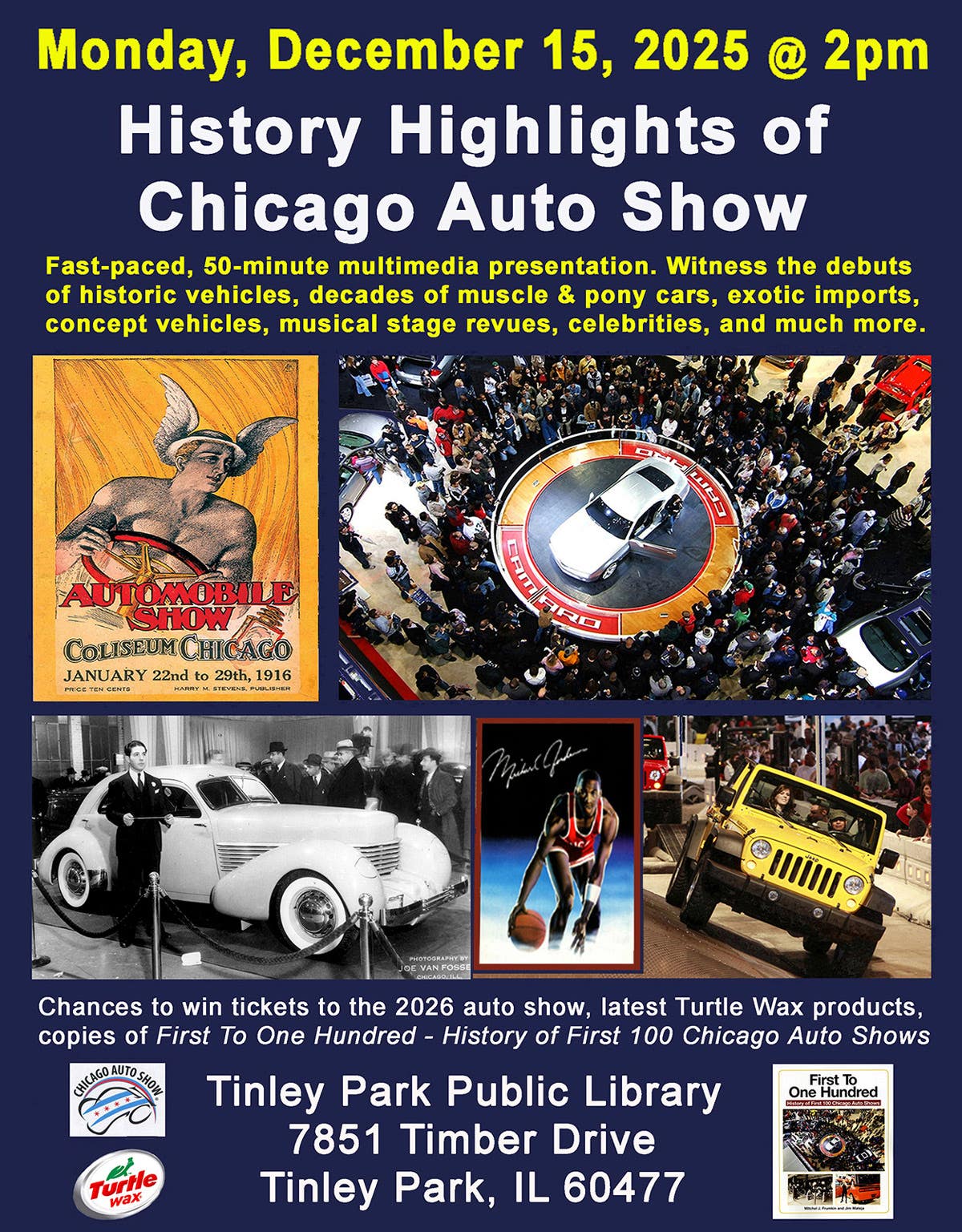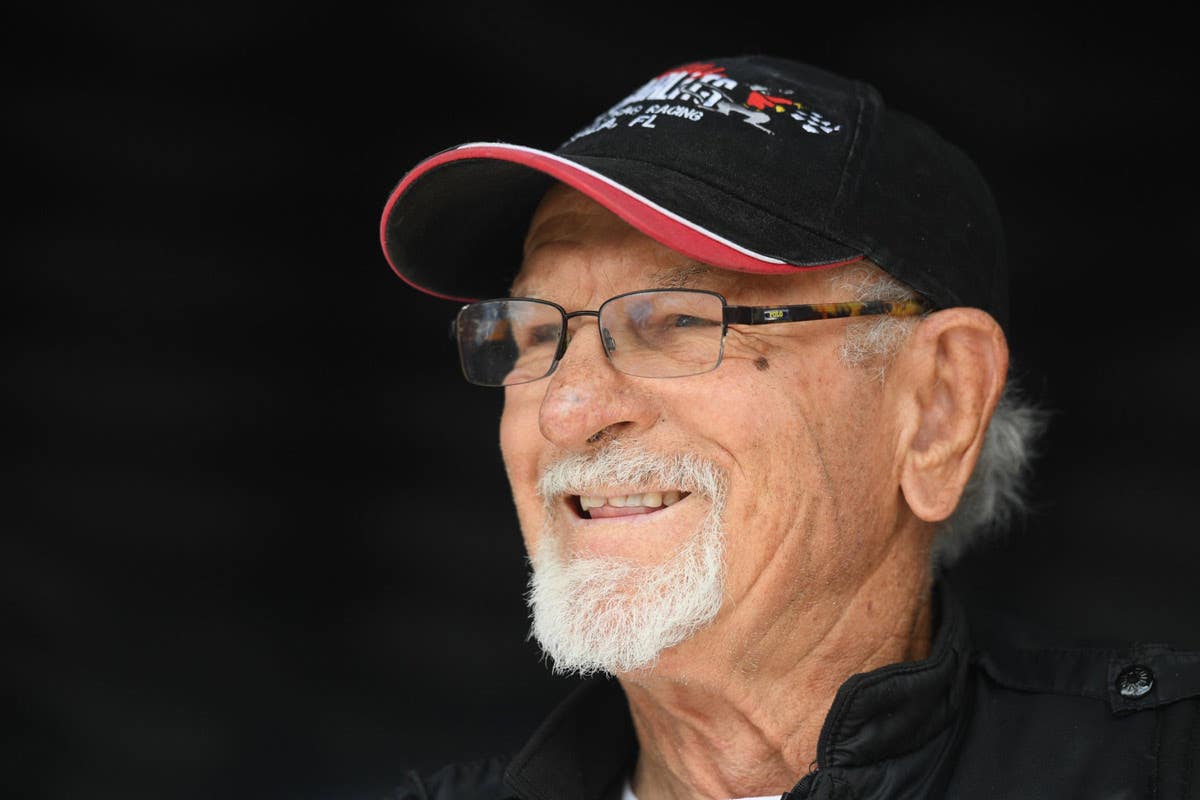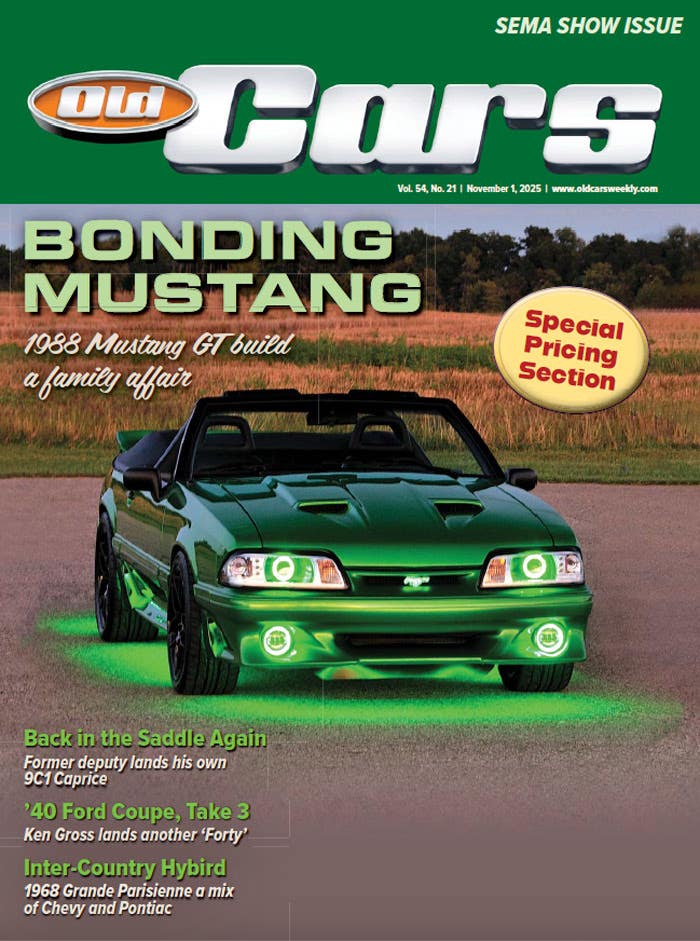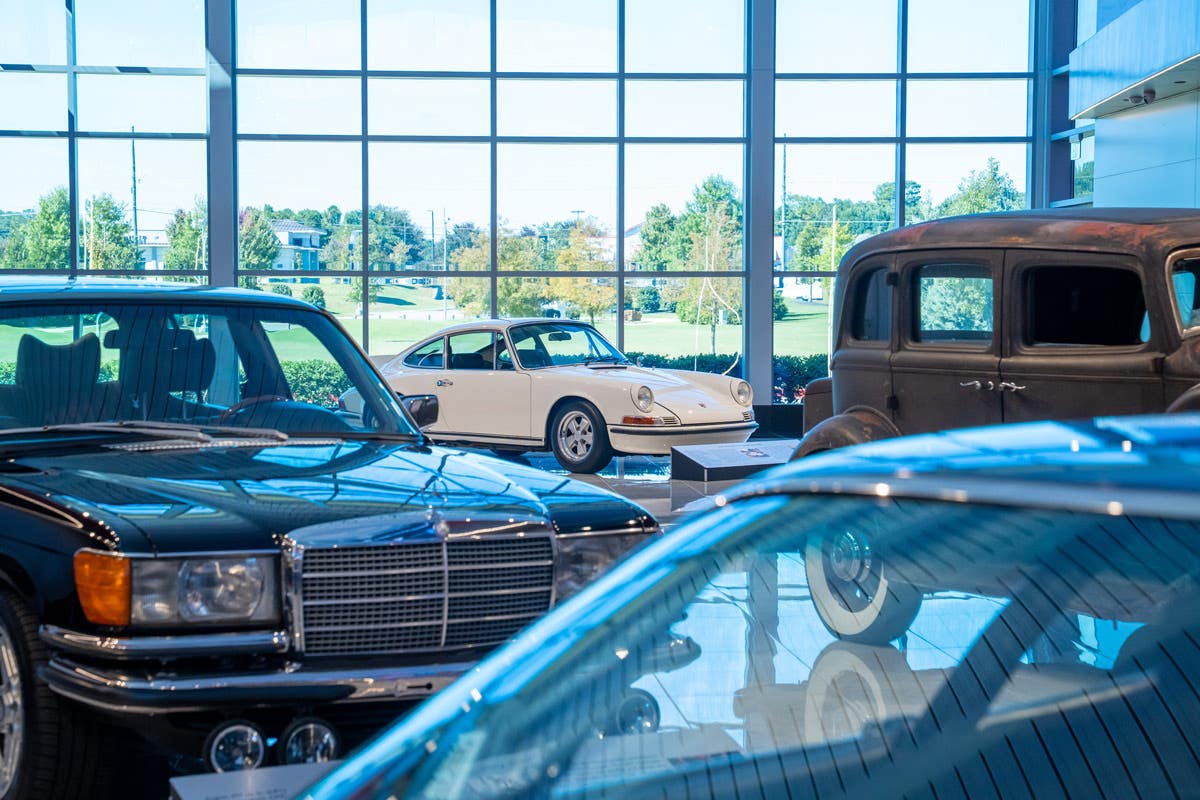You ‘auto’ be mine: Cars on vintage valentines
Cars and romance have been intertwined for a long time
More wry that romantic, this adult-themed “vinegar valentine” dates from early 1920s; the pull-tab moves the driver’s leg up and down on the clutch pedal.
By Terry V. Boyce
Cars and romance have been intertwined for as long as there have been automobiles, it seems. It is not surprising, then, that motorcars have frequently been depicted on valentines.
The exchange of romantic greeting cards on St. Valentine’s Day was a well-established tradition by the time the first road-going self-propelled vehicles appeared. Valentine publishers have always been quick to identify their products with fads and trends of interest to young people. Hence, automobiles were already being portrayed on valentines by the advent of the 20th century.
Dating to just after World War I, this “mechanical”
valentine features a roadster with Victoria top that
can be rotated into the “down” position.
Before World War I, and then again after the war and into the 1930s, many valentines sold in the United States were printed in Germany. Cars shown on early German-produced valentines often exhibit European design features, but later cards usually depict vehicles of obvious American origin.
Automotive valentines also reflect graphic and automotive design trends, with pre-World War II cards reflecting the Art Nouveau ornateness of the early 20th Century, the Art Deco influences of the Roaring ’20s and the streamlined look of Modernism in the 1930s.
The car illustrated on this valentine printed in Germany
appears to be modeled on a 1926-’28 Auburn Cabriolet.
Some of the most impressive early car valentines are of the “dimensional” type. These elaborate die-cut cards feature an expandable honeycomb paper backing, which can be pulled open to create a freestanding three-dimensional valentine. Since these showy and large cards — some measure more than a foot in length — are often illustrated with cars heavily draped in flowers, they may appeal more to valentine collectors than to car enthusiasts. Some rarely seen later examples do, however, depict 1920s Classic cars in authentic and vivid detail.
By the 1920s, many American valentines focused on popular contemporary means of personal transportation, such as automobiles, aircraft and speedboats. These “topical” cards were produced on flat stock, die-cut to the shape of the object depicted or the scene it appeared within. Many were so-called “mechanicals,” which, in the world of valentine collectors, simply means there are one or more separate pieces on the card that can be moved to simulate motion. Often, 1920s valentine car illustrations are modeled on real cars and it is sometimes possible to even determine the car make that provided inspiration.
A boy operates a tire pump when the pull-tab is moved
on this large mid-1930s deluxe “mechanical” valentine,
which also has a tinted celluloid windshield insert.
During the 1930s, larger die-cut mechanical valentines became popular. These special cards were often given to a child by a doting parent or relative, or were presented by a child to a favorite teacher or other adult. (Even today, teachers receive more valentines than anyone else.) Often, the vehicles shown on these large and colorful 1930s cards resemble fanciful pedal cars more than real cars. By 1935, most American valentines were printed in the United States.
A surprising number of car valentines depict gas station scenes. Conversely, racing-car valentines seem scarce, perhaps because it was difficult to work both a boy and girl into scenes.
This large, die-cut valentine from the mid 1920s features
a “real” rubber hose extending from the gas pump to the
car. Many car valentines feature gas pumps as well.
After World War II, small and inexpensive cards, printed on rectangular card stock, became the rule. Produced in assortments for elementary classroom card exchanges, these cards are rarely as artistic and interesting as their predecessors.
The girl in this race car can be moved up and down
on this “mechanical” valentine printed in Germany.
Smaller die-cut car valentines can still be found for less than $5. Larger cards and impressive “mechanicals” range from $10 to $20 or more in nice condition. Exceptional car-themed dimensional valentines may command much higher prices.
Terry V. Boyce and his wife, Sally, have assembled an extensive collection of vintage automotive valentines, including those reproduced here. Most were found at antique shows and shops, as well as at estate sales and flea markets. In recent years, online auctions have provided additions.
Grille and other details resemble a 1940 LaSalle on
this vintage valentine from just before World War II.
More Resources For Car Collectors
- Classic car price guides, research, books, back issues of Old Cars Weekly & more
- Get expert restoration advice for your classic car
- Get car pricing, data and history all in one place
- Sign up for Old Cars Weekly's FREE email newsletter
- Need to buy or sell your classic car? Looking for parts or memorabilia? Search our huge online classified marketplace








